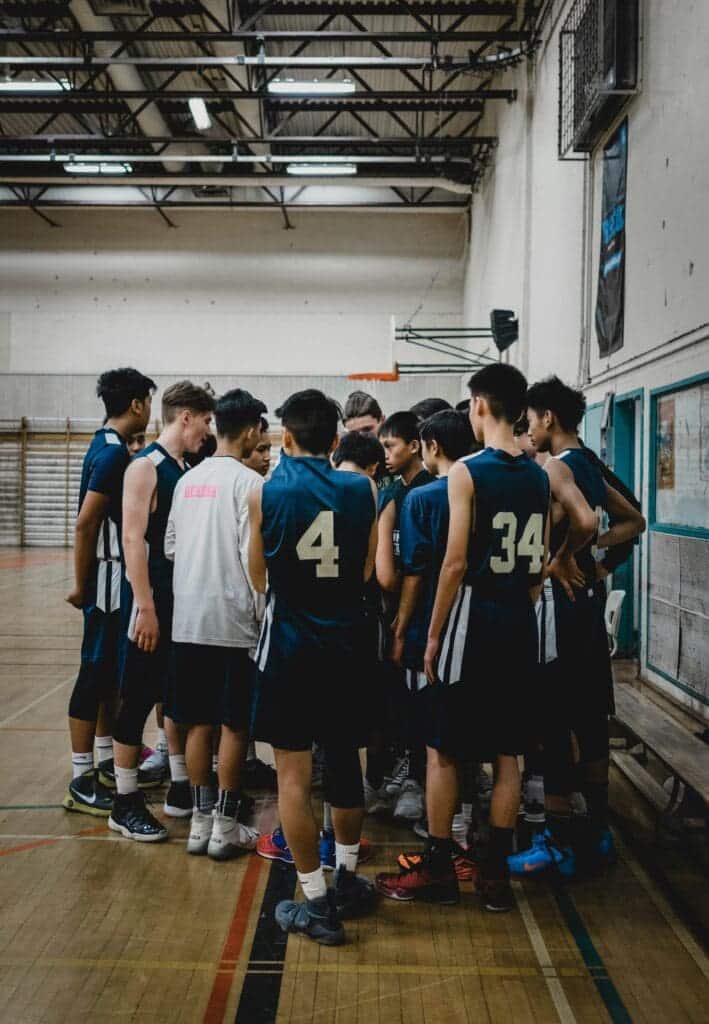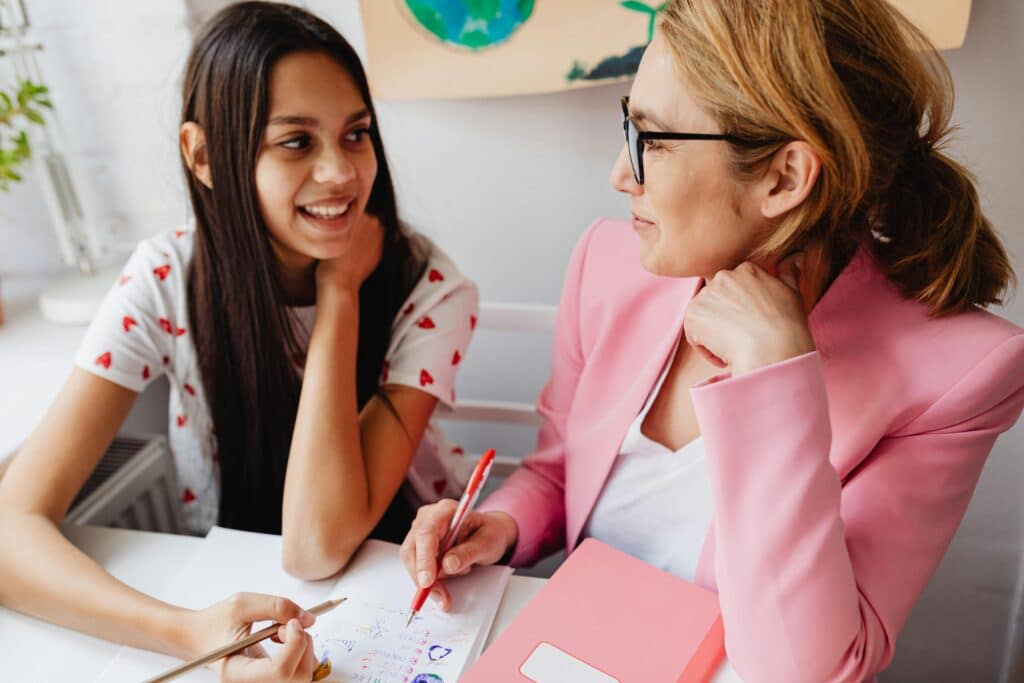Understanding the Importance of Friendship

Friendship plays a pivotal role in a school environment, influencing not only the social dynamics but also the academic journey of students. Building friendships in school contributes significantly to emotional support, allowing students to navigate the diverse challenges they encounter. Friends offer a reliable source of comfort during stressful times, whether related to schoolwork, social pressures, or personal issues. This emotional backing can elevate a student’s mental well-being, ultimately leading to improved resilience and confidence.
Moreover, friendships facilitate the development of crucial social skills. Through interactions with peers, students learn to communicate effectively, resolve conflicts, and collaborate on group projects. These interpersonal skills are invaluable not just within the school setting but also in future professional environments. The ability to form and maintain friendships teaches students essential qualities such as empathy, respect, and the importance of teamwork. As they engage in varied social experiences, students refine their understanding of diverse personalities and perspectives, which further enriches their interpersonal dynamics.
Additionally, having friends can enhance overall academic success. Studies have shown that students with strong friendships tend to have higher levels of motivation and engagement in their academic pursuits. Friends often encourage each other in studying, share resources, and provide an environment that fosters collective learning. As a result, positive peer influences can lead to greater academic achievement. Furthermore, a supportive friendship network can counteract feelings of isolation or anxiety, often present in schooling environments. The psychological benefits derived from friendships extend beyond immediate comfort, contributing to a stronger academic performance and a more fulfilling school experience.
Being Open and Approachable

Creating an environment that is conducive to friendship begins with presenting oneself as open and approachable. The importance of body language cannot be overstated when it comes to interaction. Effective non-verbal communication can significantly influence how peers perceive and respond to an individual. First and foremost, maintaining good posture is essential. Standing or sitting up straight emanates confidence and readiness to engage with others. When positioned in a relaxed manner, it signals to classmates that one is open to conversation and new relationships.
Facial expressions play a crucial role as well. A warm, genuine smile can go a long way in disarming social barriers. It invites others to approach and fosters an atmosphere of friendliness. Additionally, making eye contact while interacting conveys attentiveness and interest, which further encourages others to engage in conversation. Conversely, crossed arms or averted gaze may be interpreted as defensiveness or disinterest, which can inadvertently deter potential friendships.
Verbal communication is also significant in demonstrating approachability. Using an inviting tone of voice can enhance interaction. When conversing, it is beneficial to ask open-ended questions that allow others to express themselves. This not only showcases genuine interest but also makes it easier for peers to feel comfortable sharing thoughts and experiences. Remember that active listening is vital; responding affirmatively or with follow-up questions indicates that one values others’ input.
Additionally, participating in school activities or clubs can boost visibility and enhance opportunities for friendship. By being present and engaged in shared interests, individuals naturally appear more approachable, enabling the formation of new relationships more effortlessly. Overall, embodying a friendly demeanor through thoughtful body language, facial expressions, and active listening is crucial in cultivating a welcoming atmosphere that encourages others to initiate connections.
Joining Clubs and Extracurricular Activities

Participating in clubs and extracurricular activities serves as one of the most effective ways to forge new friendships in school. These environments facilitate interactions among students who share similar interests, fostering connections that can evolve into meaningful relationships. The diversity of clubs available caters to a wide range of hobbies and passions, providing an inclusive platform for individuals to express themselves and find camaraderie.
For instance, students inclined towards sports can join athletic teams such as soccer, basketball, or track and field. These teams not only promote physical wellbeing but also create opportunities for teamwork and collaboration, which are fundamental in building friendships. Similarly, students with artistic inclinations can consider joining a drama club, band, or visual arts group. Engaging in creative activities not only enhances skills but also helps bond over shared projects and performances.
Academic clubs, such as debate, science, or math clubs, present another avenue for friendship. Participants work together to enhance their knowledge and skills, often leading to late-night study sessions or collaborative projects that strengthen their connections. Additionally, clubs dedicated to community service or environmental advocacy can also unite students under a common cause, thus reinforcing the sense of belonging while contributing to society.
Moreover, extracurricular activities provide a relaxed atmosphere that encourages socialization beyond the classroom dynamics. The informal nature of these settings allows students to engage in conversations with peers they may not have interacted with otherwise. By joining clubs and participating in school activities, students can easily find others with whom they share interests, easing the transition into new friendships and enriching their overall school experience.
Starting Conversations: Ice Breakers and Topics

Initiating a conversation can sometimes feel daunting, especially in a school setting where students seek to connect with new peers. One of the most effective ways to start a dialogue is by employing ice breaker questions. These questions are designed to elicit friendly exchanges and help break down social barriers. For instance, consider asking about a classmate’s favorite subject, hobbies, or extracurricular activities. Such inquiries invite students to share something personal, thus fostering a sense of belonging and mutual interest.
In addition to ice breakers, utilizing relatable topics is essential for establishing a rapport with potential friends. Discussing shared experiences, such as recent school events, popular movies, or current music trends can create a comfortable atmosphere. By engaging in common interests, students may find it easier to discover mutual passions, laying a foundation for deeper connections. Furthermore, remaining open to different perspectives will enrich conversations and enhance the likelihood of forming lasting friendships.
Active listening plays a pivotal role in the art of conversation. It is crucial not only to speak but also to truly hear what others are saying. Show genuine interest by nodding, maintaining eye contact, and asking follow-up questions related to their responses. This conveys that one values their opinions and insights, encouraging more profound dialogues. Moreover, practicing empathy and understanding can significantly contribute to a more inviting conversation, making it easier for classmates to express themselves freely.
Building new relationships at school begins with effective communication. By using ice breakers and discussing relatable topics, alongside honing active listening skills, students can create an environment conducive to fostering friendships. Ultimately, cultivating genuine connections will enrich the overall school experience.
Utilizing Social Media and Online Platforms

In today’s digital age, social media and online platforms have become integral tools for communication and connection among students. They offer unprecedented opportunities to foster relationships, particularly for those who may feel apprehensive about forming friendships in traditional settings. With platforms such as Facebook, Instagram, and Snapchat, students can engage with their peers beyond the classroom, allowing for a broader social network.
One of the primary advantages of utilizing social media is the ability to connect with others who share similar interests and hobbies. Groups or pages dedicated to specific subjects or activities can serve as common ground for students, facilitating conversations and potential friendships. Additionally, these platforms provide a space for students to arrange social gatherings, study groups, or even casual meet-ups, thereby reducing the pressure often associated with face-to-face interactions.
However, while social media can be a powerful tool for relationship building, it is essential to navigate this digital landscape carefully. Miscommunication can easily occur through text-based interactions, leading to misunderstandings or conflicts amongst peers. Furthermore, the tendency to present an idealized version of oneself online can create a barrier to authentic connections, prompting feelings of inadequacy or anxiety among students. Therefore, it is crucial to maintain transparency and authenticity in online interactions.
To ensure healthy online interactions, students should consider setting boundaries regarding their online presence. Engaging in meaningful conversations, avoiding negative online behavior, and being respectful towards others’ opinions are key aspects of fostering positive relationships through social media. Additionally, balancing online activities with offline interactions can help students develop more substantial friendships. By understanding both the potential benefits and pitfalls of social media, students can effectively utilize these platforms to build friendships that enrich their school experience.
Being Yourself: Authenticity in Friendships

The journey of making friends in school can often feel overwhelming, especially when it comes to navigating the complex social dynamics that exist. However, one of the most effective ways to build meaningful relationships is by embracing authenticity. Being true to oneself not only attracts like-minded individuals but also fosters deeper connections grounded in honesty and mutual respect. Authenticity serves as a foundation for friendships, allowing individuals to express their true interests, values, and personality traits without the fear of judgment.
When students remain genuine in their interactions, they naturally draw others who resonate with their authentic selves. This alignment often leads to more fulfilling friendships, as both parties feel comfortable sharing their thoughts and experiences. Conversely, attempts to fit into specific social groups or conform merely to peer expectations can result in superficial connections that lack true depth. Therefore, it is essential for students to nurture their individuality, which can manifest through hobbies, interests, and unique perspectives.
Nevertheless, the challenge of peer pressure can complicate the pursuit of authenticity. Students may feel compelled to change their behavior to gain acceptance or avoid social exclusion. To navigate these pressures effectively, it is crucial to develop strong self-awareness and confidence in one’s personal identity. Engaging in supportive extracurricular activities or surrounding oneself with positive influences can bolster resilience against negative peer influences.
In building friendships that thrive on authenticity, students should actively seek out environments that celebrate diversity and encourage self-expression. By prioritizing their true selves over conforming to others’ expectations, students can cultivate connections that are not only genuine but also enduring. The essence of friendship lies in understanding and accepting one another, and authenticity serves as the pathway to achieving these lasting bonds.
Overcoming Social Anxiety and Fear of Rejection

For many students, the prospect of making new friends can evoke feelings of social anxiety and fear of rejection. These emotions are common and can be significant barriers to forming new relationships. However, it is essential to address these feelings proactively in order to enhance social interactions. One effective approach is gradual exposure to social situations. This technique involves starting with small, manageable encounters that can help build confidence over time.
For instance, begin by participating in brief conversations with classmates or peers. These interactions could take place before or after class, during lunch, or at extracurricular activities. The key is to initiate contact, even in low-stakes situations, which can gradually desensitize feelings of anxiety. Over time, as these small engagements accumulate, it can lead to more profound connections and lessened apprehension.
Additionally, focusing on self-affirmation can play a crucial role in overcoming fear. Students should remind themselves that making mistakes is an inherent part of socializing. It is important to understand that rejection is not a personal failure but rather a natural occurrence in the process of forming relationships. By maintaining a positive mindset and framing social interactions with an open perspective, students can diminish their fear of being turned away by others.
Another practical strategy is to seek support from trusted friends or family members. Discussing one’s feelings of anxiety can not only provide emotional relief but can also equip individuals with new strategies to cope. Engaging in role-playing scenarios with someone familiar can help prepare for real-life situations, allowing students to practice responses to different social encounters.
Ultimately, the journey to making friends will require persistence and patience. By approaching social scenarios with a gradual mindset, a focus on self-affirmation, and seeking support, students can effectively reduce their social anxiety and foster meaningful connections with their peers.
Maintaining and Nurturing Friendships

Once new friendships are established, the focus shifts to their maintenance and nurturing, both of which are vital for creating lasting relationships. One of the most effective ways to keep in touch with friends is through regular communication. Simple gestures, such as texting to check on their day, calling to catch up, or engaging through social media platforms, can strengthen bonds. By demonstrating consistent interest in each other’s lives, friends can cultivate a deeper connection.
Showing appreciation for friends is another crucial aspect of nurturing relationships. Small acts of kindness, such as complimenting their achievements or simply expressing gratitude for their presence, can significantly enhance friendships. Acknowledging special moments or milestones, such as birthdays or anniversaries, is also a great way to make friends feel valued and appreciated. These gestures reinforce the idea that the friendship is mutual and important.
Conflicts, while sometimes unavoidable, can pose a threat to friendships if not addressed appropriately. It is essential to approach disagreements with an open mind and a willingness to understand the other person’s perspective. Engaging in honest and respectful dialogue can lead to resolution and often results in a stronger friendship. Practicing forgiveness and letting go of grudges also contribute to the health of a relationship.
Investing time into friendships is fundamental for their growth. Friends should make an effort to plan regular hangouts or activities, whether that’s studying together, watching movies, or participating in sports. These shared experiences create fond memories and foster emotional connections. Ultimately, nurturing friendships requires a balance of communication, appreciation, conflict resolution, and time investment, ensuring that these relationships flourish over time.
Recognizing Unhealthy Friendships

Friendships play an essential role in our lives, especially during the school years when social connections profoundly influence emotional well-being. However, not all friendships are beneficial; some can become unhealthy and detrimental to one’s mental and emotional health. It is crucial to recognize the signs of an unhealthy friendship to take appropriate action and safeguard your well-being.
One of the most prominent indicators of an unhealthy friendship is a persistent feeling of negativity. If the majority of interactions with a friend leave you feeling drained, anxious, or unhappy, it may be time to reassess the relationship. Healthy friendships should bring joy, support, and a sense of acceptance. If you consistently feel bad about yourself or find that the friendship undermines your self-esteem, this is a red flag.
Another critical aspect to consider is the dynamics of communication. If you frequently feel manipulated or controlled by a friend, it is essential to evaluate the balance in the relationship. Friends should respect each other’s boundaries and have open communication; however, if you find yourself constantly bending to their will or feel guilty for asserting your preferences, the friendship may be unhealthy.
Lastly, the support system within the friendship should be mutual. A good friend should provide encouragement, understanding, and assistance during challenging times. If you notice that your friend is consistently dismissive of your concerns or fails to offer support when needed, this may indicate an unhealthy dynamic. It is vital to surround yourself with individuals who uplift you and prioritize your well-being, as such friendships can foster growth and resilience.
In conclusion, recognizing unhealthy friendships involves being mindful of feelings, communication dynamics, and the overall support offered. By prioritizing healthy relationships, one can enhance their emotional welfare and ensure that friendships contribute positively to their life experience.


Pingback: Unlock Remarkable Online Learning Benefits: Master Your Classes
Pingback: Key Extracurricular Activities Benefits for Student Success
Pingback: Weight Loss Tips: Empower Your Journey to Success
Pingback: Mastering Student Mental Health: Mind-Blowing Strategies for Wellness
Pingback: Navigate Your School Layout with Surefire Confidence!
Pingback: Embrace New Beginnings: High School to College Transition
Pingback: Support System for Students: Tips for Building Strong Connections
Pingback: Unlocking the Miracle of Self-Confidence in Education
Pingback: Healing from Heartbreak: Embrace Resilience and Hope
Pingback: Are Learning Styles a Cool Thing? What Science Says to Kids and Adults
Pingback: Bold Strategies to Combat Academic Stress: Causes and Solutions